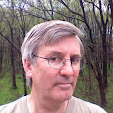And then there was covid, and then it was 2023. This may be a momentous moment for Veloprint. Sixteen years ago, when I launched Veloprint, I was still an avid Kansas cyclist, but having retired in the Colorado Rockies I've largely replaced cycling with hiking, and, perhaps emblematically, have sold my gravel bike in order to purchase a lovely tabletop etching press from the Conrad Machine Company. It is pictured here with my beloved Salsa "La Raza" road bike (the same bike that posed for the masthead of Veloprint), which I will never part with as it is my talisman of good times and a reminder of many splendid rides.
So, after several decades I am experimenting with etching again, but now in the changed environment of "non-toxic" printmaking. I always liked the toxicity of printmaking, but life is good too, so I've opted to try and go solvent free. Here's my first attempt, a scene in the local mountains where someone built a sort of lean-to cum meditation-spot or perhaps an orgone energy gathering platform. I don't really know, but it's a lovely spot.






































